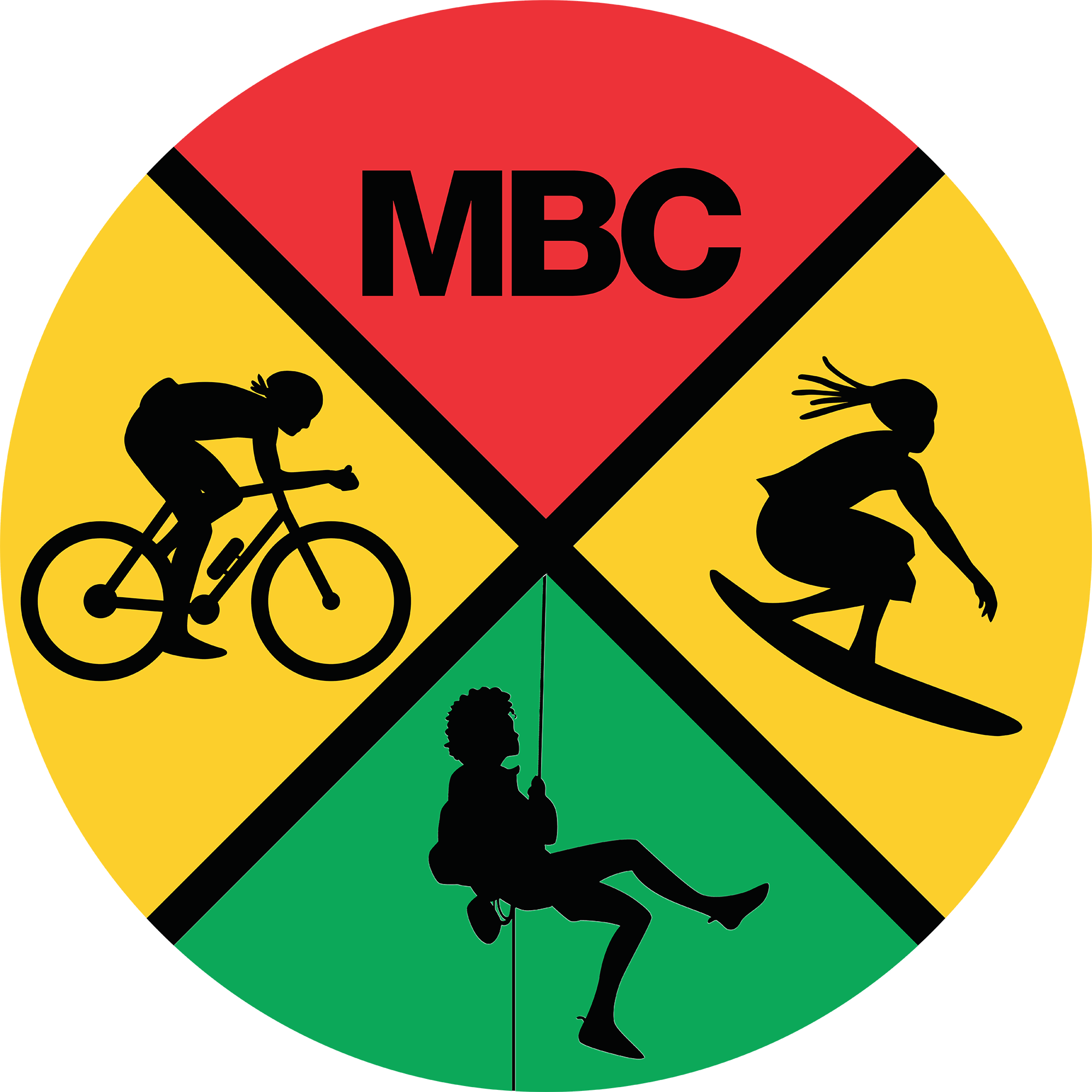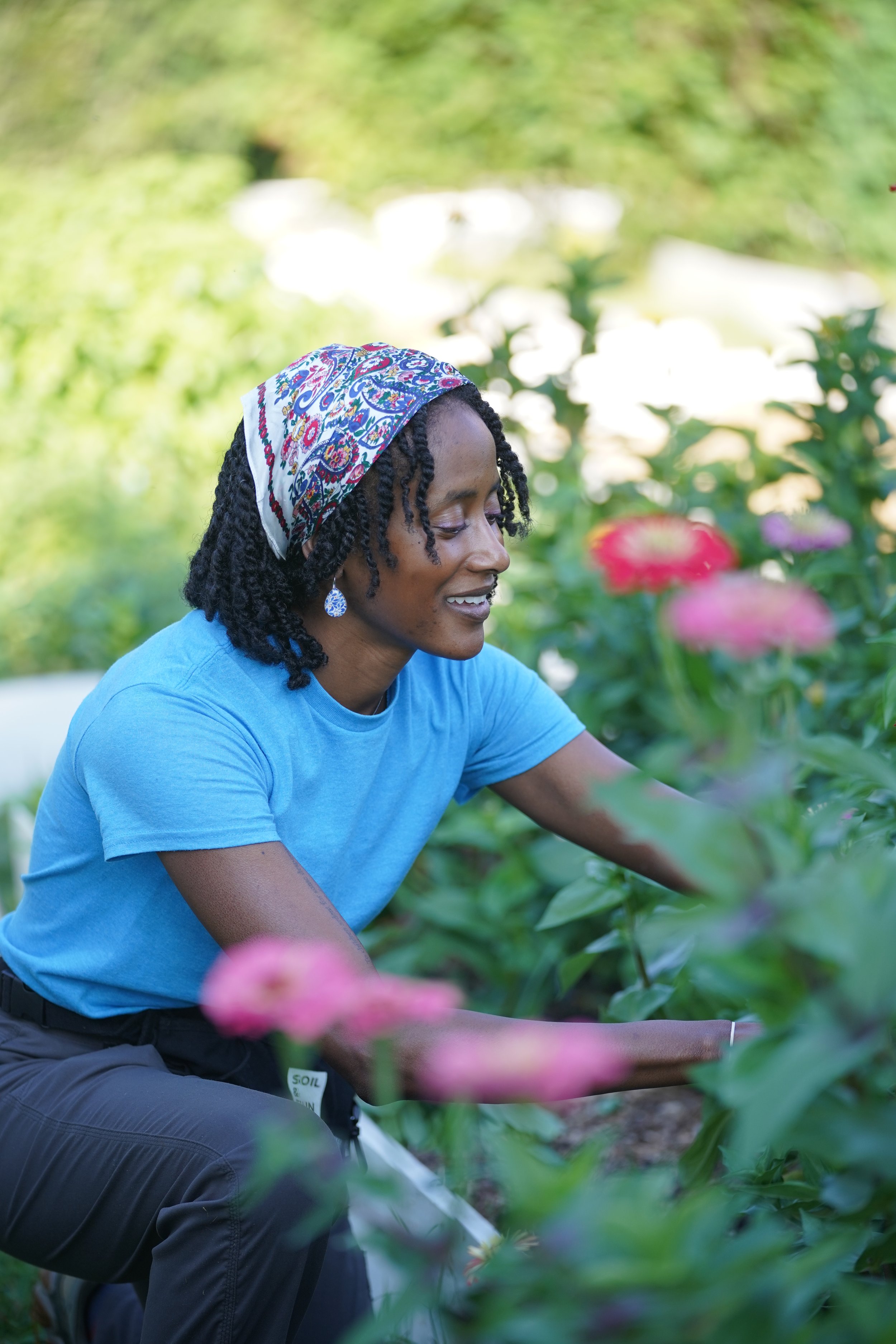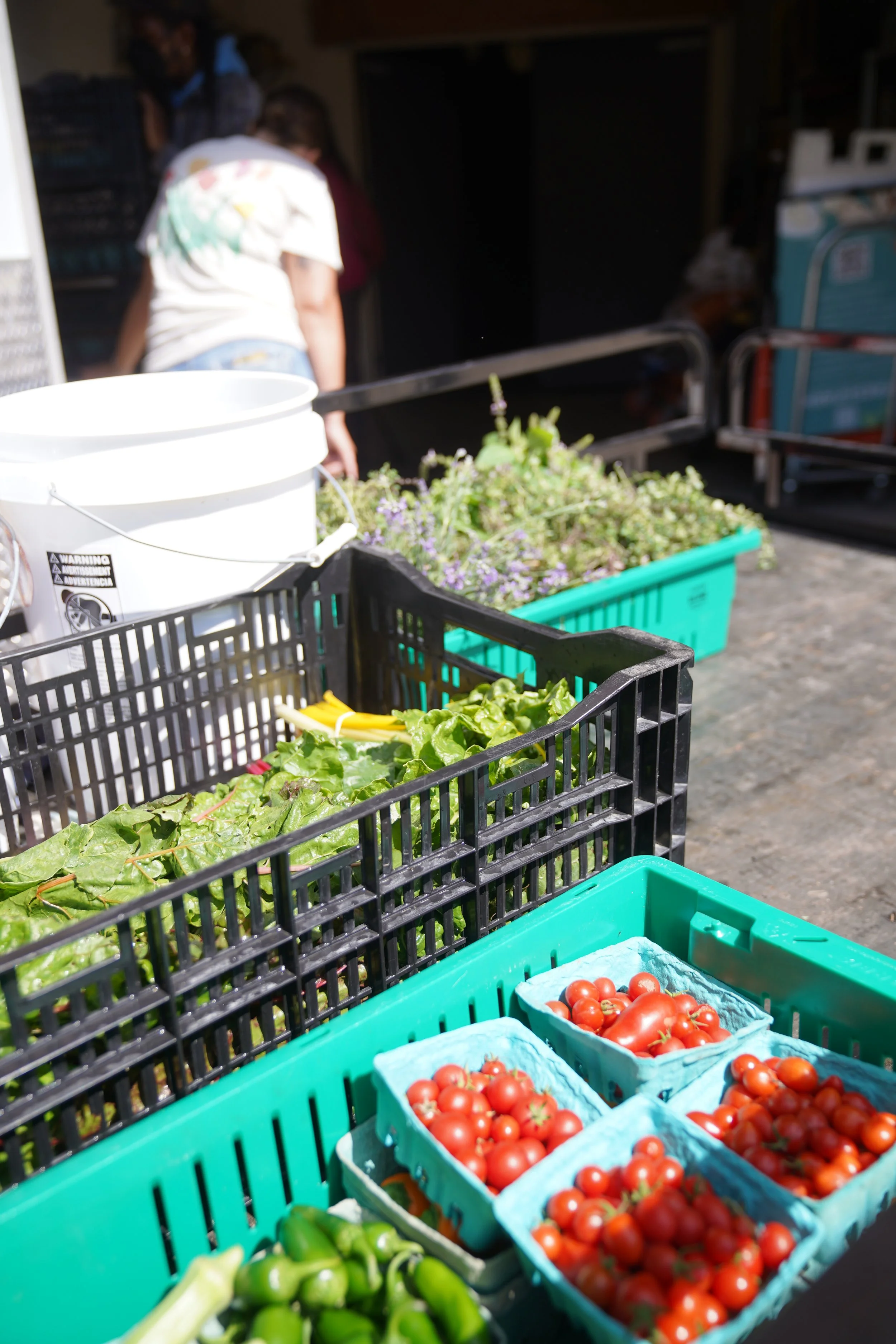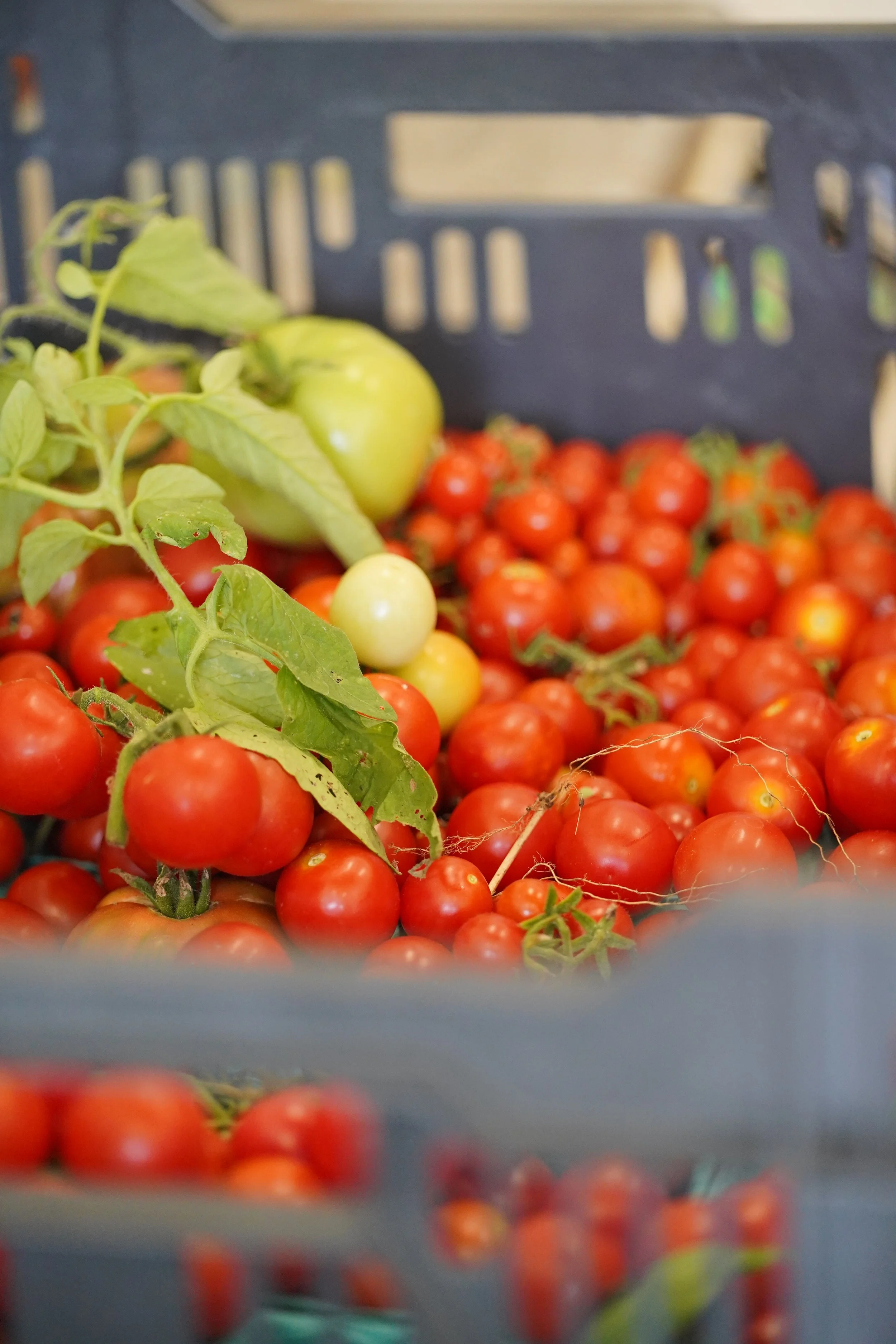What I Learned From Volunteering at an Urban Farm During SNAP Cuts
Photo credit: Hai T.
This summer I left my job at a medium-sized nonprofit. I wasn’t sure what direction I was headed in but I knew I wanted to try direct service – for once in my life.
I ended up volunteering full-time at an urban farm in southeast DC. It’s part farm and part food pantry. That means, they grow their own organic produce. They also purchase fruits and vegetables wholesale and receive donations from the local food bank.
During the week, I helped plant, weed and compost. On Fridays, we harvested produce and gave it right back to the community. Eventually, I took over their Instagram account and started shooting and editing video, to post five days a week. It was exhausting but rewarding work.
It was also the best decision I had made in years. I never felt more grounded than I did filling crates and five-gallon buckets with beans, jalapenos, carrots, kale, collards, Swiss chard, bok choy, lettuce and tomatoes. I also fell in love with the hoop house, where the farmers grew five different types of tomatoes.
“Send money. Food banks and food pantries can buy in bulk at wholesale prices – you can’t. While canned goods are valued, start with dollars – if you can. ”
Then I did something I had never done before. I started quiet quitting my other outdoor hobbies – skydiving, hiking and rowing – in order to spend more time pruning tomato plants and pushing wheelbarrows full of compost. I liked the crunch the kale made when harvested and bundled. I followed wasps and trails of ants to find pale yellow okra flowers and well-camouflaged okra pods. I stripped off gardening gloves to rummage through the bean patch. In the hoop house, I lifted vines in search of ripe torpedo melons. I tried drop cherries for the first time and fell in love with the burst of flavor.
I also looked forward to my regulars — mostly Black seniors from the neighborhood who stopped by to say hello and choose between collards and mustard greens. Feeding my community was incredibly satisfying work.
Cue mixed feelings about leaving my 2010s actualized self behind in pursuit of elder millennial hobbies. Aging is such a privilege!
But most importantly I finally felt like my labor mattered. There’s nothing quite like giving away farm-fresh vegetables that were in the ground that morning and in a grocery bag by the afternoon. I’ve spent years working for pass-through nonprofits. It felt good to actually get my hands dirty.
Then SNAP funds were frozen.
While many leftists and liberals joked online about MAGA voters getting what they deserved, things got scary for the nearly 42 million Americans who depend on SNAP to put food on the table. I’m a member of the 92% of Black women voters who didn’t vote for deep cuts to public benefits. While I feel scared and frustrated, I’m not taking my anger out on children, who make up 40% of SNAP recipients. I also know that hunger disproportionately impacts Black Americans who make up nearly 30% of SNAP recipients. So why would I celebrate cuts to a program that is a lifeline for so many people?
All of a sudden, the line at the weekly food distribution doubled, and wrapped around the building. The farm’s Instagram doubled, then quadrupled its follower count. People shared our food giveaway posts day and night until suddenly hundreds of thousands of people were viewing our posts. It felt overwhelming. The combination of a record-breaking government shutdown and SNAP funds being frozen meant food relief orgs across DC were under tremendous pressure. Maybe I had romanticized my volunteer role at the farm. I had been enjoying direct service and getting in touch with nature — meanwhile 1 in 7 U.S. families were worried about putting food on the table.
It’s mid-November now. This is the last week of the year that we’ll be giving out food. It’s a little sad to walk through the farm and see bare earth where plants used to be – or worse – shriveled, dry husks that used to be snap beans, sunchokes or flowering okra. It’s okay though. Life and death are all part of farming. Even though I don’t know if I’ll ever get used to tearing up collards and tossing them onto the compost pile.
The 2025 federal government shutdown is over which means a little relief. The line no longer wraps around the building. I can chat with regulars instead of anxiously filling reusable bags – as quickly as possible. But food insecurity hasn’t disappeared.
Washington DC is still a city of haves and have nots. Ward 8 in southeast DC is still a food desert. It has only one full-service grocery store to serve 86,509 people (13% of the city’s population). Compare that to Ward 3 in Northwest DC which has 15 full-service grocery stores to serve 78,404 people (12% of the city’s population). I can’t walk a mile without stumbling into a Trader Joes, Whole Foods or Safeway.
The difference is clear. Ward 8 is a mostly Black community and a casualty of food apartheid—or deliberate disinvestment in low-income Black or Brown communities. Ward 3 is not.
The discrimination which affects southeast DC probably impacts your city too. This problem exists across the U.S. and worldwide. Systemic racism and classism have decided that some people are more deserving of food than others. And the people who benefit are silent
So what can you do about it?
You know that one time you thought about volunteering but then got so overwhelmed by options that you ended up doing nothing? It’s time to reengage.
Everyone deserves access to healthy food. Food is a basic human right, remember? You don’t have to join an urban farm or community garden to practice community care. Here are some things you could try instead:
Photo credit: Nam T.
Photo credit: Hai T.
1) Donate to a food relief organization
Wait, do I send money or canned goods?
Send money. Here’s why: Food banks and food pantries can buy in bulk at wholesale prices – you can’t. They can stretch your donation dollars to feed even more families. While canned goods are valued, start with dollars – if you can.
You don’t have to donate a large amount of money either. Send what you can and consider a monthly contribution to help feed hungry families in your community. Yes, just a few dollars a month can make a difference.
Photo credit: Hai T.
Photo credit: Hai T.
2) Volunteer at a food bank
Food banks store massive amounts of food in warehouses before delivering it to smaller food pantries, farm stands and soup kitchens. Additionally, they also run meal programs and help people access food benefits, like SNAP and WIC. Want to give back? Grab a pair of closed-toed shoes and sign up for a shift to inspect incoming donations; build pallets of produce; or prepare meals for a feeding program. Go alone, or go with friends, or a group.
Here are a few food banks to check out in your area.
NYC
Food Bank for NYC is the city’s largest food relief organization with 800 partners across five boroughs. In the past year, they delivered 67 million meals to New Yorkers, provided 26 million lbs of fresh produce and 1.4 million lbs of non-food items. Every $1 donation provides up to 15 meals for New York families.
CHICAGO
Greater Chicago Food Depository has 850 partners across Chicago and Cook County where 1 in 5 households experience food insecurity. In the past year, they’ve provided 101.4 million meals while assisting 19,000 SNAP and WIC applications.
WASHINGTON D.C.
Capital Area Food Bank has 400 nonprofit partners across the Washington DC metro area where 1.5 million adults and children experience food insecurity. They also contribute to 500 distribution sites that include “afterschool meals for kids and monthly groceries for kids.” In the past year, they’ve directly or indirectly provided 60 million meals to people in the DC metro area.
LOS ANGELES
Los Angeles Regional Food Bank has hundreds of partners across Los Angeles county where 1 in 4 neighbors face food insecurity. They rely on support from hundreds of thousands of volunteers annually.
DENVER
Food Bank of the Rockies serves communities across Colorado and Wyoming. So far, in 2025, they have distributed 85 million lbs of food, and 195,000 meals while partnering with over 700 hunger relief organizations. Every $1 you donate provides three meals for neighbors facing food insecurity.
Photo credit: Nam T.
Photo credit: Nam T.
3) Volunteer at an urban farm, mobile pantry, food pantry, soup kitchen or shelter.
Are you ready to be on the frontlines fighting hunger in your community? Check out direct service orgs that offer hot meals, food boxes, bookbags stuffed with kid-friendly snacks and nonperishables. This isn’t charity. It’s community care. Just remember that—whether you’re restocking a community fridge or rescuing fresh produce from a local grocery store.













Then SNAP funds were frozen. While many leftists and liberals joked online about MAGA voters getting what they deserved, things got scary for the nearly 42 million Americans who depend on SNAP to put food on the table. So why would I celebrate cuts to a program that is a lifeline for so many people?